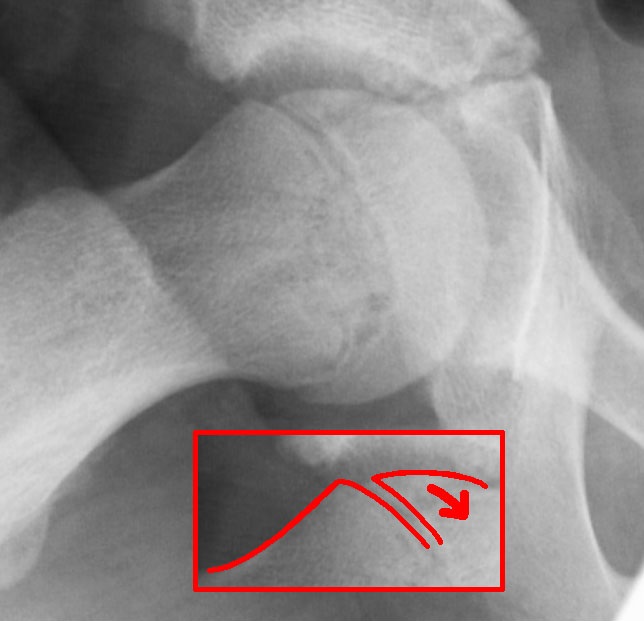In order to understand this condition it is important to understand the anatomy and function of the hip. Please read Hip Pain Info’s section on the anatomy of the hip.
The hip joint is a ball and socket joint. The ball is formed by the top of the thigh bone (the femur) and is called the “head” of the femur. The head of the femur in growing children is also called the “capital femoral epiphysis”.

What is Slipped Capital Femoral Epiphysis?
The areas where bones grow are called growth plates. In growing children, there is a growth plate just below the head of the femur. Growth plates are weaker than other parts of the bone. Slipped capital femoral epiphysis (SCFE) is the term used to describe the condition in adolescents in which the growing head of the femur (also called the capital femoral epiphysis) “slips” off the rest of the thigh bone. It slips off in a backward direction.
What causes Slipped Capital Femoral Epiphysis?
Why the capital femoral epiphysis “slips” off the rest of the thigh bone is not well understood but it is thought to have something to do with weakness of the growth plate. Slipped capital femoral epiphysis usually happens during periods of rapid growth, shortly after the beginning of puberty.
Is Slipped Capital Femoral Epiphysis more common in boys or girls?
Although the cause of slipped capital femoral epiphysis is not known, what is known is that it happens more often in boys than in girls. Increased body weight may also play a role.
In most cases of slipped capital femoral epiphysis the slip happens slowly. However, in some cases the slip happens suddenly and can be associated with a minor fall or injury.
Hip Pain Info’s links section has additional information on osteonecrosis of the hip. Links have been provided to other websites as well as online medical journals. Visit Joint Pain Info for information on other joint injuries and problems.
